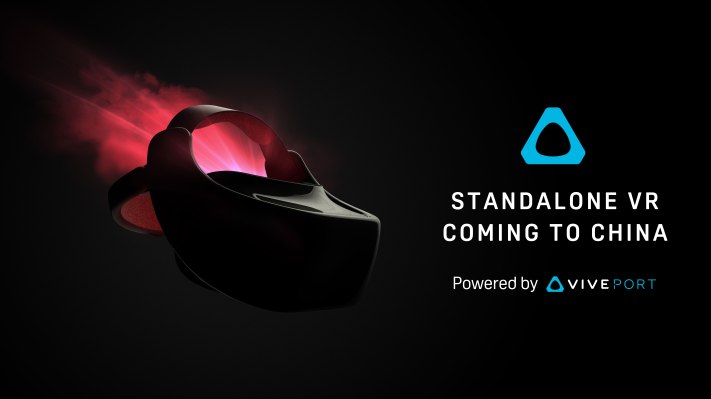Today at ChinaJoy, HTC announced that it is working on a standalone headset for Chinese markets built on its own Viveport content platform.
The headset appears to be cosmetically identical to the one which HTC is bringing to the U.S. with Google. The differences between the headsets seem to lie largely in the differences in tracking technologies and VR platforms themselves.
While the U.S. offering will be built on Google Daydream and utilize Google’s WorldSense positional tracking technology, Vive’s China-focused standalone will utilize Qualcomm’s Snapdragon VR tracking tech and run on HTC’s Viveport platform.
The PC-tethered HTC Vive runs on Valve’s SteamVR platform, which has been a favorite among many for its highly accurate tracking system and integration with the online Steam store. HTC launched its Viveport store last year as a hub for non-gaming content but quickly thereafter embraced gaming titles along with a monthly subscription service.
HTC is currently running an in-headset Viveport app-launcher on a number of phone-based VR headsets in China; the announcement that it will be designing a standalone headset entirely around its own software is quite notable and shows the significance of the Taiwanese tech company’s presence in Asian markets.
“China is the leading mobile market in the world today, and has the momentum to lead the global VR market as well,” said HTC Vive exec Alvin W. Graylin in a statement.
Neither HTC or Qualcomm had much to share about what exactly there was to expect from the standalone Vive coming to either the U.S. or China, though details on Qualcomm’s 835 reference VR headset likely offer some perspective.
“It’s following the reference design and the reference design has a given set of specs and features,” Hugo Swart, a product management senior director at Qualcomm tells me.
Swart also offered some color on Qualcomm’s positional tracking tech, which he says is more suited for movements like dodging and ducking while standing, not necessarily the walk-around VR consumers have seen on tethered VR systems. While HTC’s Daydream standalone headset will utilize the Daydream controller, it is also unclear what type of input the new Chinese standalone will utilize. In terms of potential battery life, Qualcomm already has a number of Chinese OEM partners in its headset accelerator program working on headsets that Swart says are shooting for around two hours of usage.
While China has seen much more movement in the standalone market than the U.S., pricing will be key for HTC, which markets its system as VR’s “premium” brand. No details on a release date for the standalone in China, though HTC has said it wants to get the all-in-one out in the U.S. by the end of 2017.
